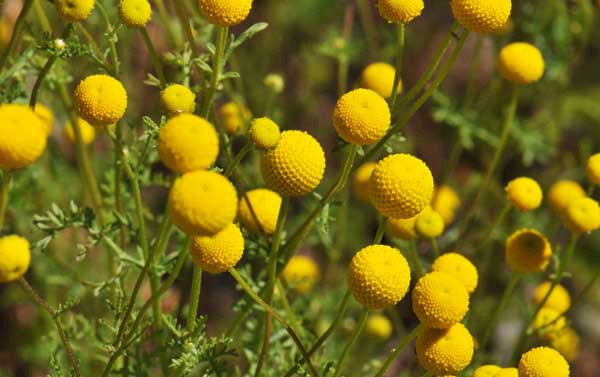We Don’t Need No Stinking Stinknet!
By Tony Figueroa
 |
| Stinknet with flowers, John Scheuring |
Tucson Audubon’s Invasive Plant Strike Team has been hard at work recently removing stinknet (Oncosiphon piluliferum), a non-native plant from South Africa. It has been slowly spreading throughout Arizona over the past decade after first being found in Maricopa county. After the wet winters of 2018 and 2019, it had a tremendous expansion in the Phoenix and Casa Grande corridors. Stinknet then made its way down the highway on construction vehicles that were used to build the Ina overpass at I-10. This heavy equipment was kept near Prince and I-10 and now that area is the main source of stinknet in the region.
Tucson Audubon, along with our partners at Pima County Regional Flood Control District and Natural Resources, Parks and Recreation, Saguaro National Park, the Arizona-Sonora Desert Museum, and the Arizona Native Plant Society has been trying to educate the community about this species spreading throughout the Tucson Basin. We’ve received a generous donation that has allowed us to survey all of the known sightings for this species in the Tucson area. Additionally, we have been contracted by Pima County Regional Flood Control District to survey and eradicate the plant on the lands that they manage, including the Santa Cruz River channel and the wastewater treatment facilities north of Sweetwater Wetlands.
| Matt Wonsik (with stinknet in hand) and Jonah Reyes by Jaemin Wilson |
At this point, you might be asking why is this plant such a problem?
- Compounds in the stems and leaves can be very irritating to the skin. If you start pulling plants with bare hands you might start to experience a tingling sensation, if you’re lucky. Others can develop rashes and blisters.
- The pollen and tiny dust-like seeds can cause respiratory problems, ranging from severe allergies to asthma attacks.
- Stinknet is capable of producing hundreds to thousands of seeds from a single plant and will germinate readily in undisturbed sites, which makes it especially invasive. Many of the common non-native invasive species tend to stick to roadsides and disturbed areas, while stinknet will move into untouched areas with ease.
- Fire risk is the icing on the cake for the hazards this plant poses to our Sonoran Desert ecosystem. The majority of plants that are native to the Sonoran Desert have no evolutionary adaptations to survive fires, so if a wildfire burns through the desert most of the plant community will die off and be very slow to return.
- The smoke that is produced from burning stinknet is caustic to the lining of our lungs.
Simply put this plant is really bad and we want to keep it out of our community.
 |
| The Prince Rd. and I-10 site, before |
 |
| The Prince Rd. and I-10 site, after |
If you have seen stinknet, please let us know! Tucson Audubon is tracking its locations around Tucson--help us by entering your location on our map at tucsonaudubon.org/stinknet. If you can, remove it (wear gloves!), bag it up, and throw it away. If you need help identifying or removing the plant, contact Tony Figueroa (tfigueroa@tucsonaudubon.org) of the Tucson Audubon Invasive Plant Strike Team. We’re here to help you and the Sonoran Desert ecosystem.
Tony Figueroa is Tucson Audubon’s Invasive Plant Program Manager.

Comments
Post a Comment
Thanks, we value your opinions! Your comment will be reviewed before being published.